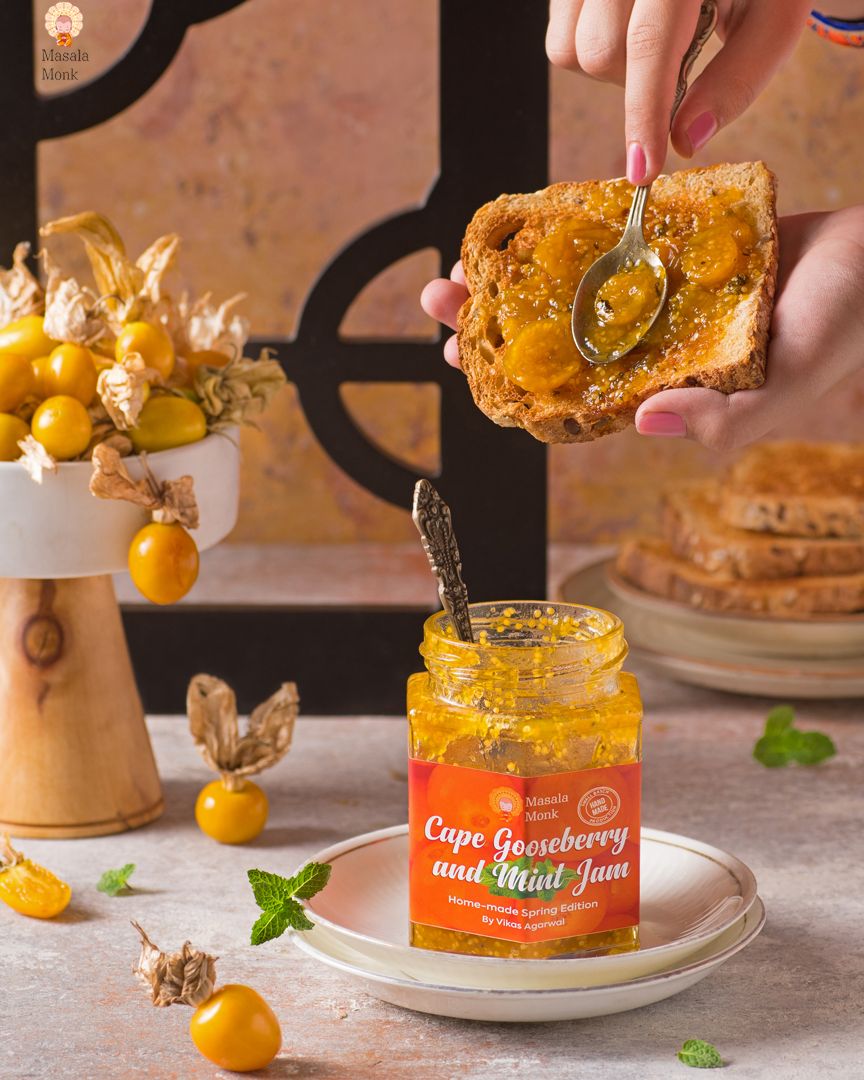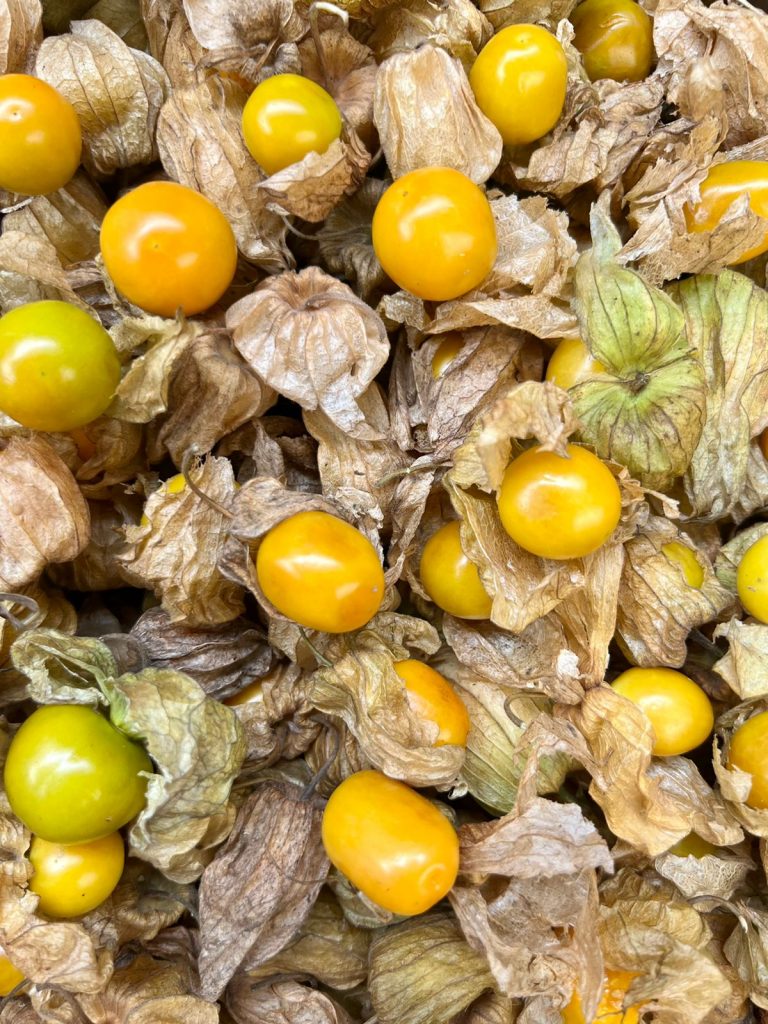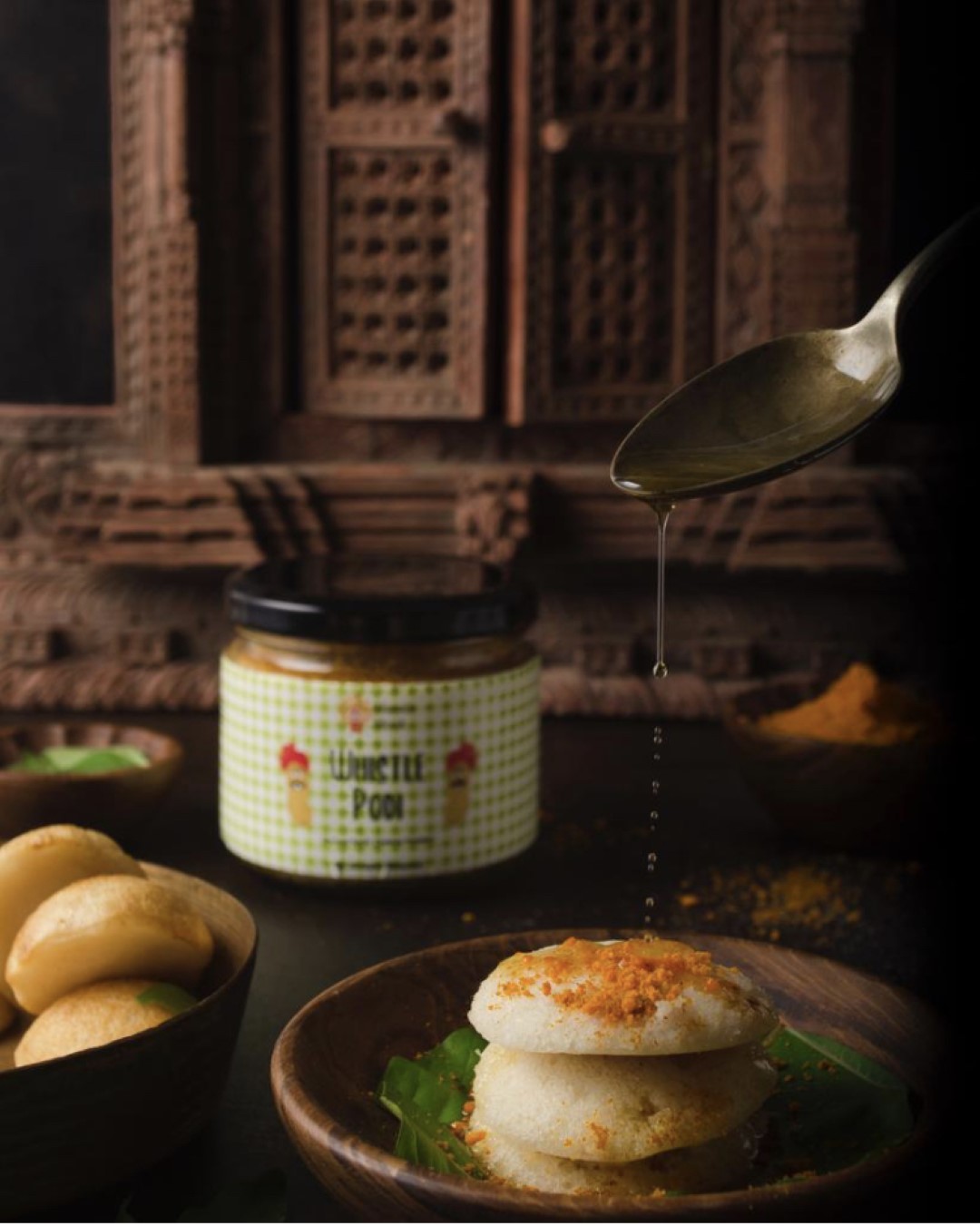
There’s something incredibly satisfying about making your own jam the simmering fruit, the sweet fragrance filling the kitchen, and that rewarding pop of the jar sealing just right. An extremely delicious, uniquely flavoured cape gooseberry jam that titillates the palate slightly fruity, tangy, mildly sweet Cape Gooseberry & Mint Jam to add the right amount of crunch and piquant to your breakfast or dessert. With its tangy sweet flavor, golden hue, and fresh herbal lift from mint, this jam is a refreshing twist on traditional fruit preserves. It pairs beautifully with toast, pancakes, cheese platters, or even as a glaze for desserts.

Today’s recipe is a little different and absolutely delightful: Cape Gooseberry and Mint Jam.
Ingredients:
- 500g Cape gooseberries (also called Rasbhari or golden berries), husked and rinsed
- 350g sugar (adjust to your taste)
- 1 tbsp lemon juice (for brightness and natural acidity)
- 1 tsp natural pectin (optional, depending on how thick you like your jam)
- 2 tbsp fresh mint leaves, finely chopped
Instructions:
Gently rinse the cape gooseberries, remove their papery husks, and pat them dry. Cut larger ones in half. In a heavy-bottomed pan, combine the gooseberries, sugar, and lemon juice. Let it sit for 15–20 minutes to macerate this helps release the juices.

Turn on the heat to medium and bring the mixture to a boil. Stir frequently as the fruit begins to break down and the sugar dissolves. Skim off any foam that forms. Once the jam starts to thicken (about 15–20 mins), add the chopped mint and natural pectin. Stir continuously for another 5–7 minutes until it reaches your desired consistency.
Use the cold plate test: drop a small spoonful on a chilled plate, wait a few seconds, then run your finger through it. If it wrinkles and holds its shape, it’s done! Pour the hot jam into sterilized jars, leaving a little space at the top. Seal immediately and let it cool. Store in the refrigerator if not canning for long-term storage.
Spread on hot buttered toast or scones, swirl into yogurt or oatmeal, Pair with cheese boards or Dollop on pancakes or waffles for a gourmet touch.
Tips & Tricks:
- Cape gooseberries naturally contain some pectin, so you can skip added pectin if you’re okay with a softer-set jam.
- The mint should be added towards the end of cooking to retain its fresh flavor and green flecks.
- You can blend the jam slightly if you prefer a smoother texture.
- For a bolder citrus note, add some lemon zest along with juice.
This Cape Gooseberry and Mint Jam is sunshine in a jar tangy, sweet, and kissed with herbal freshness. Whether you’re a seasoned jam maker or a curious beginner, this recipe is simple to follow and incredibly rewarding. Try it once, and it just might become your favorite homemade preserve. Find out more jam recipe here!
If you try this recipe, do give us a shout out. Just click a picture and tag us on @masala.monk or use the hashtag #MasalaMonkRecipe and share on Instagram and Facebook. We would love to hear from you. 🙂Happy cooking!










